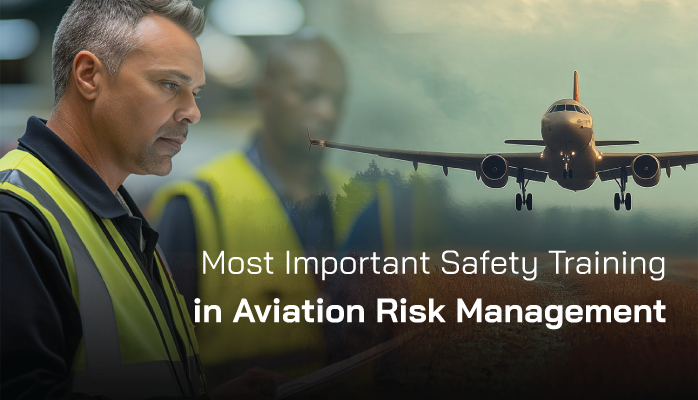The Tone Your Aviation Safety Training Should Have

Airports and airlines are busy places. Many inexperienced and experienced pilots and other personnel can be found hurrying about completing their tasks and missions. In such conditions, as in all aviation settings, a good safety culture is essential.
Airports exemplify many important SMS training values that help to keep pilots safe. These include:
- Responsibility;
- Quality instruction;
- Respect;
- Cooperation; and
- Good communication.
Aviation safety training should always have an undertone that addresses these points, whether the material being covered is hazard identification training or any other type of safety training.
Training Against Complacency With Responsibility in SMS
Complacency is one of the leading causes (if not THE leading cause) of aviation accidents. In 2011, a number of factors “resulted in (the) controlled flight into terrain” of a Twin Commander in Arizona. According to the National Transportation Safety Board report, factors “contributing to the accident were the pilot's complacency and lack of situational awareness."
On a moonless night, the pilot was given an air traffic control clearance which he followed blindly into the side of a mountain. Additionally, upon embarking, the pilot was aware that the aircraft was not airworthy!
My instructors often stress the importance of taking a proactive approach to collision avoidance. Additionally, before each flight, I am responsible for doing a thorough check of documentation and the aircraft to ensure airworthiness. This tragic accident serves as a solemn reminder of the importance of being a responsible pilot.
Related Articles on Human Factor Complacency
- Let’s Talk Human Factors - Complacency
- What the SMS Human Factor Complacency Looks Like (With Free Newsletter Resource)
The Importance of Teachers and Administrators in Safety

Safety is not only the responsibility of the pilot; teachers and administrators also have an extremely important role to play in safety. This personnel is responsible for adequately preparing students and employees.
Poor instruction used to grant a qualifying certificate is an insidious hazard because it:
- Gives the illusion of safety preparedness on paper and in the minds of the people receiving the training; but
- Does not actually prepare students/employees to mitigate unsafe situations.
For example, in 1992 an airliner crashed when landing in instrument meteorological conditions. An inspection revealed that both the captain and copilot lacked proper training and equipment for the flight. Before departing, the pilot in command expressed misgivings about the flight but was not trained well enough to feel confident their misgivings were legitimate.
Without adequate training, how can a pilot be expected to distinguish normal feelings of alertness from recognizing an actual hazard? Proper instruction is a vital SMS training value in promoting a safe environment.
Related Articles on Hazard vs Risk
Respect Limitations, Not Ability
Pilots must respect personal and aircraft limitations.
The decision to abort a landing is a good illustration of this concept. In ground school, I learned that:
- While only 24% of flight time is spent in the landing phase;
- 61% of all aviation accidents occur during this time.
Most landing accidents occur when a pilot is unwilling to abort an unsafe landing. Often, the pilot wrongly believes:
- Aborting to be a show of weakness; or
- Their “skill” can easily overcome the danger of landing.
At the flight center, such a stigma is not present. On the contrary, a willingness to abort signifies a responsible pilot who is realistic about the human potential for error, and aircraft limitations.
[Comment from the Editor] Indeed, we have seen such a trend in operators we work with as well. Aborted landing and Go-arounds are key metrics that we have seen work their way into many aviation service providers’ lists of key performance indicators.
Related Aviation SMS Training Articles
- How Recurrent Aviation SMS Training Makes Good Business Sense
- Why Employees Can’t Stand Aviation SMS Training
- 4 Pillars | 10 Things You Need to Know About Aviation Safety Training
Cooperating and Communicating With Hazard Reporting
Cooperation and good communication are crucial to maintaining a safe environment. SMS is specifically designed for hazard prediction and the continuous improvement of safety, based on reports and data collection (Federal Aviation Administration).
It is my responsibility of ALL employees to report dangerous situations so that systematic errors can be corrected. Safety reports should be able to be made anonymously. This way people do not have to be afraid of being judged for sharing important safety-related information.
Hazard reporting:
- Fosters a greater community awareness of potential hazards;
- Communicates crucial safety data to management and the organization; and
- Creates a good working relationship between management and other levels of the organization.
Special thanks to aviation safety student Deborah Edwards who wrote this article, and who recently won our Aviation Safety Scholarship.
Last updated January 2025.






